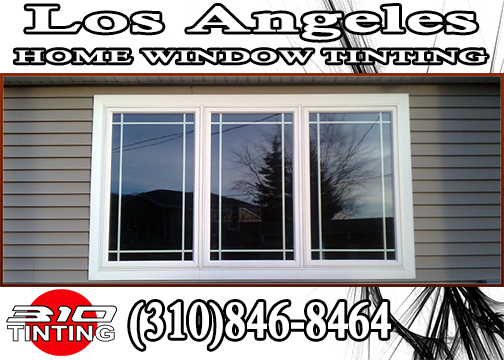Window tinting Los Angeles is the children’s hero and now is blocking UV rays
window tinting Los Angeles
We all know not to head out for a day at the beach without sun protection. But what if your only sun exposure throughout the day is in your car while shuttling your family to all of their commitments? Surely you’re safe, right? Surely your car’s windows are loaded up with both UVA and UVB protection, right?
Wrong! On average people spend one to two hours every day inside their cars with only the car windows between their skin and the sun’s damaging rays? Ultraviolet protection varies widely from car to car, and the type, thickness and colors of car windows all impact UV filtration. Most windshields have a sun protection factor of around 50 while most side windows only have about 16 SPF, said Debra Levy, Auto Glass Safety Council president.
Sun protection for your health and your home
While it’s understood that taking sun safety precautions is important outside, few people realize they can sustain sun damage indoors, too. While both ultraviolet A (UVA) and ultraviolet B (UVB) radiation from the sun can harm the skin and lead to skin cancers, UVB is effectively blocked by glass. However, at least 50 percent of UVA rays can pass through windows. Window film is an increasingly effective solution,
offering substantial indoor protection by blocking up to 99.9 percent of UVA radiation. Although they are less intense than UVB, UVA rays are 30 to 50 times more prevalent and are present with relatively equal intensity during all daylight hours throughout the year. Window film can help prevent harmful UVA rays from damaging both your skin and your belongings.

Available in varied tints, residential and commercial window films can also cut down glare by more than half while allowing 30-80 percent of visible light to get through, depending on the customer’s needs. The benefits of installing window film go beyond protecting one’s skin and household items, as it also can reduce energy costs. In hot weather, window film cuts down heat within the home and in cold weather it reflects interior heat back into the home. Additionally, some new types of “safety” film help hold residential and commercial glass in place if shattered. Several times thicker than the standard sun-protective film, it can greatly reduce the chances of break-ins, property damage, and even personal injury that can result from broken glass.
What are UVA rays?

Most of us are exposed to large amounts of UVA throughout our lifetime. UVA rays account for up to 95 percent of the UV radiation reaching the Earth’s surface. Although they are less intense than UVB, UVA rays are 30 to 50 times more prevalent. They are present with relatively equal intensity during all daylight hours throughout the year, and can penetrate clouds and glass.
UVA, which penetrates the skin more deeply than UVB, has long been known to play a major part in skin aging and wrinkling (photo aging), but until recently scientists believed it did not cause significant damage in areas of the epidermis (outermost skin layer) where most skin cancers occur. Studies over the past two decades, however, show that UVA damages skin cells called keratinocytes in the basal layer of the epidermis, where most skin cancers occur. (Basal and squamous cells are types of keratinocytes.) UVA contributes to and may even initiate the development of skin cancers.
UVA is the dominant tanning ray, and we now know that tanning, whether outdoors or in a salon, cause cumulative damage over time. A tan results from injury to the skin’s DNA; the skin darkens in an imperfect attempt to prevent further DNA damage. These imperfections, or mutations, can lead to skin cancer.
Tanning booths primarily emit UVA. The high-pressure sunlamps used in tanning salons emit doses of UVA as much as 12 times that of the sun. Not surprisingly, people who use tanning salons are 2.5 times more likely to develop squamous cell carcinoma, and 1.5 times more likely to develop basal cell carcinoma. According to recent research, first exposure to tanning beds in youth increases melanoma risk by 75 percent.
What are UVB rays?
UVB, the chief cause of skin reddening and sunburn, tends to damage the skin’s more superficial epidermal layers. It plays a key role in the development of skin cancer and a contributory role in tanning and photo aging. Its intensity varies by season, location, and time of day. The most significant amount of UVB hits the U.S. between 10 AM and 4 PM from April to October. However, UVB rays can burn and damage your skin year-round, especially at high altitudes and on reflective surfaces such as snow or ice, which bounce back up to 80 percent of the rays so that they hit the skin twice. UVB rays do not significantly penetrate glass.

Choosing sunglasses for your kids

Did you ever notice how cute kids are in sunglasses? Like those “fashion statement” sunglasses with a cool super-hero look or trimmed in teddy bear faces? More importantly, sunglasses may save their skin and eyes later in life by blocking the sun’s powerful ultraviolet rays (UVR).
Children under age 10 are at a high risk for skin and eye damage from UVR. The skin on their eyelids and around their eyes is more delicate
and vulnerable than adult skin. “And until about age 10, the lens of a child’s eye is clear, allowing greater solar penetration and thus greater UVR-induced ocular changes,” explains Adelaide A. Hebert, MD, professor and vice chair of dermatology, University of Houston. “After that, the lens starts to become more opaque, providing better protection.”
UVR exposure causes 90 percent of all skin cancers. In addition, retinal exposure to UVR is associated with cataracts and macular degeneration, both causes of vision impairment. UVR damage builds over time, so the sooner you start protecting your children’s eyes from the sun, the lower their risk will be of ever developing future eye problems.
Fortunately, good sunglasses protect both the skin around the eye and the eye itself. While children under 6 months old should never be exposed to the sun, once they reach 6 months, they should wear sunglasses outside. If they require prescription glasses, they should also wear prescription sunglasses.
Infants

0-6 months: Infants under 6 months of age should be kept out of the sun. Their skin is too sensitive for sunscreen.
An infant’s skin possesses little melanin, the pigment that gives color to skin, hair and eyes and provides some sun protection. Therefore, babies are especially susceptible to the sun’s damaging effects.
- Use removable mesh window shields to keep direct sunlight from coming in through the windows of your car or invest in UV window film, which can screen almost 100 percent of ultraviolet radiation without reducing visibility.
- Take walks early in the morning before 10 AM or after 4 PM and use a stroller with a sun-protective cover.
- Dress baby in lightweight clothing that covers the arms and legs.
- Choose a wide-brimmed hat or bonnet that protects the baby’s face, neck, and ears. A baby who wears a hat during the first few months will get used to having it on.
Babies
6-12 months: It’s now safe to use sunscreen on babies.
- Apply broad-spectrum, SPF 15+ sunscreen to areas left uncovered such as baby’s hands. Many companies have tear-free formulas that won’t sting baby’s eyes.
- If you are using a spray sunscreen, it should not be applied directly to the face; sprays should be misted into the hands, and then spread on the face.
- Most importantly, sunscreen must be applied 30 minutes before going outside and reapplied every two hours or after swimming or excessive sweating.
Toddlers/Pre-School Age
Protecting toddlers from the sun requires a little more thought and effort. It is important to educate your child and caregivers.
- Look for broad-spectrum sunscreens with an SPF 15 or higher. Water-resistant, spray-on sunscreens are a good choice for toddlers who won’t sit still. Spray sunscreens should not be applied directly to the face; sprays should be misted into the hands, and then spread on the face.
- Make sure your child seeks the shade between 10 AM and 4 PM. check the outdoor area where your child plays to make sure there is adequate shade.
- Make sure toddlers are covered. Long-sleeved, unbleached cotton clothing is cool and comfortable, while also highly protective. Clothing with an Ultraviolet Protection Factor (UPF) listing on the label offers extra security. The Skin Cancer Foundation recommends clothing with a UPF of 30 or higher.
- Don’t forget hats and sunglasses. Choose a wide-brimmed hat that protects face, neck, and ears.

We need to teach children early the importance of wearing sunglasses – just as we teach them to brush their teeth and wear a seat-belt, so that they develop good habits that last for life
310 TINTING – Applications we provide:
Car window tinting in Los Angeles | tint removal Los Angeles | window tinting Law in Los Angeles | CHP police fix it ticket | carbon charcoal ceramic | window tint | front windshield window tinting | Clear Bra | Car Wrapping | Black Matte | Residential Window Tinting Los Angeles Commercial Window Tinting | tint removal | house | Home| store | Mall | Shopping Center | ceramic window tinting | Metallic window film | Dye window tinting films | Hospital window treatment | government security film |office window tinting | Heat Rejection | UV rays | sun and radiation | Window Tinting | yacht liner | Marine Window Tinting | boat | yacht
Related Topics:
Automotive window tinting in Los Angeles DIY projects | window tinting Laws in Los Angeles | window tinting applications in West Los Angeles | Residential window tinting treatments | south |East | West Los Angeles window tinting regulations | Skin Cancer and window tinting advantages
Window Tinting
Marine window tinting in Los Angeles
Power Boat Window Tinting in Los Angeles
Automotive window tinting Los Angeles
Car Window Tinting in Los Angeles
Auto window tinting in East Los Angeles
SUV window tinting in West Los Angeles
truck Window Tinting in Los Angeles
Residential Window Tinting Los Angeles
Home Window Tinting in West Los Angeles
House Window Tinting in East Los Angeles
Sliding Door Window Tinting in Los Angeles
Architectural window tinting Los Angeles
Commercial Window tinting in Los Angeles
Office Window Tinting in West Los Angeles
Security Window Tinting Los Angeles
Anti-Graffiti window tinting in Los Angeles
Car Wrapping in West Los Angeles
Los Angeles window tinting with Nanotechnology
Window Tinting Topics
- Window Tinting Laws in California
- How much Cost Window Tinting
- Window Tinting Shades and Colors
- Heat Rejection Window Tinting
- Ceramic Window Tinting
- Fix it Ticket Window Tinting
- UV Window Tinting Solar Shield
- Nanotechnology Window Tinting
- Discounted Window Tinting Prices
- Yelp Window Tinting
- Window Tinting Installer in LA
- Tint Removal in Los Angeles
By Armando Vera from 310 TINTING
Automotive, Marine, Mobile, Residential, Commercial
Los Angeles California
west Los Angeles – East Los Angeles -South Los Angeles – Central Los Angeles
Call us Now,! @ (310)846-8464
